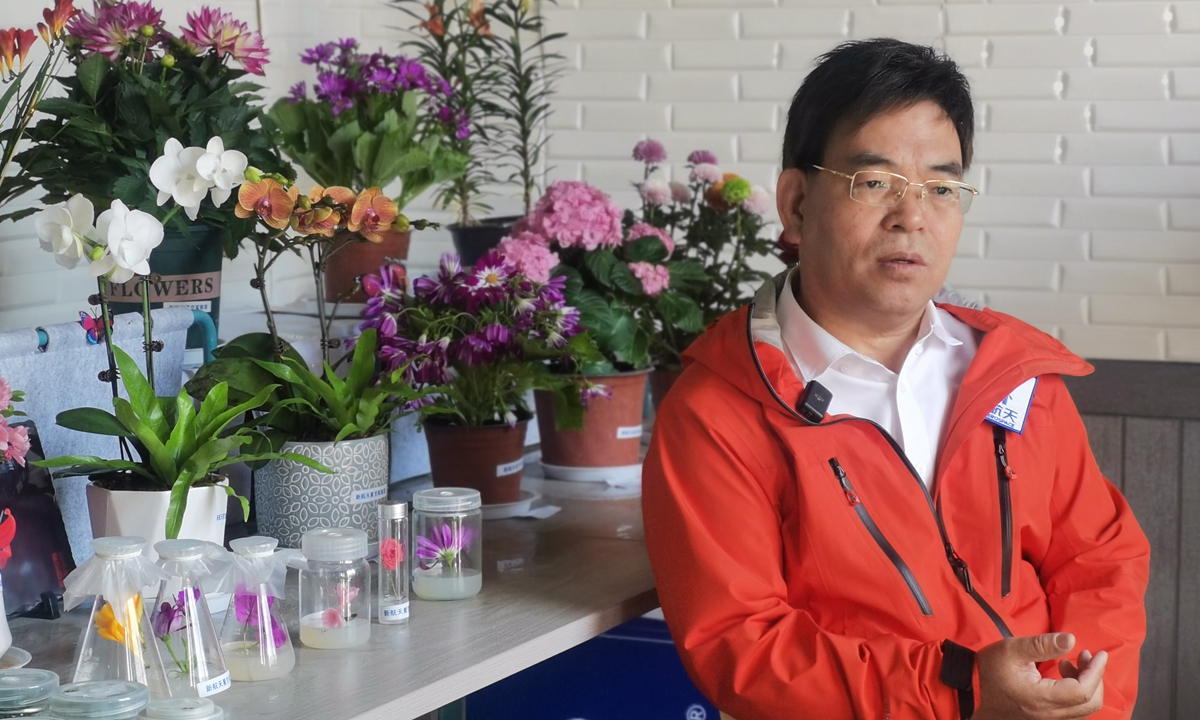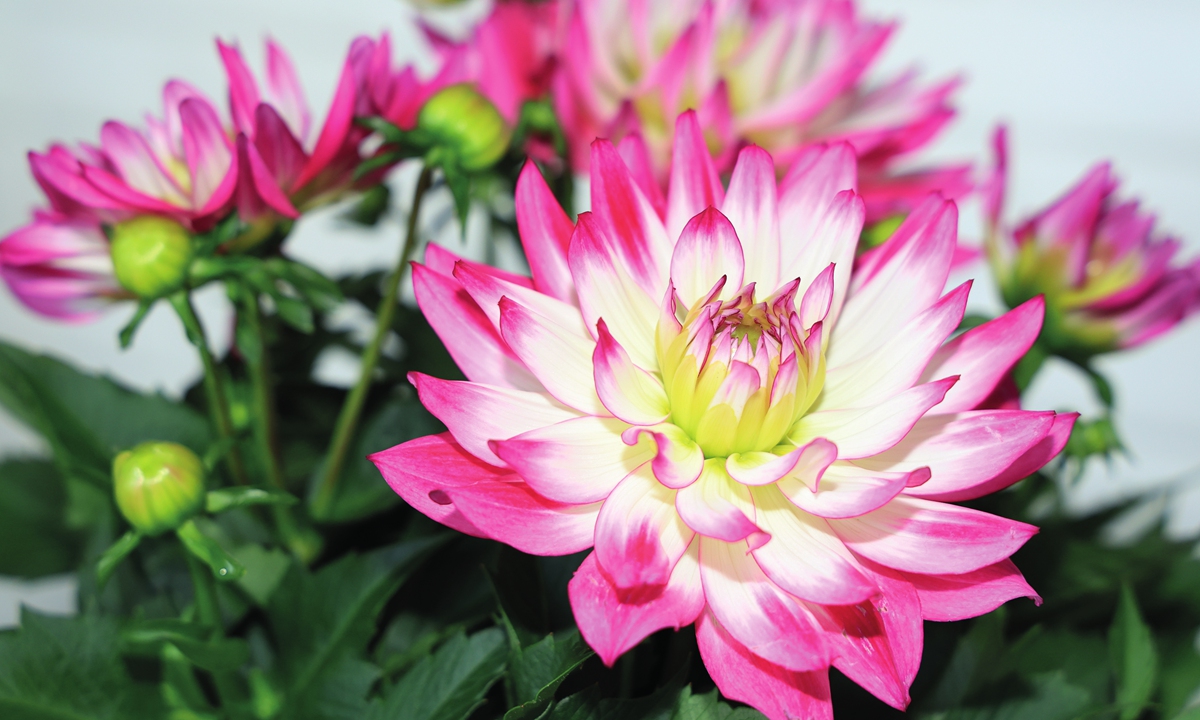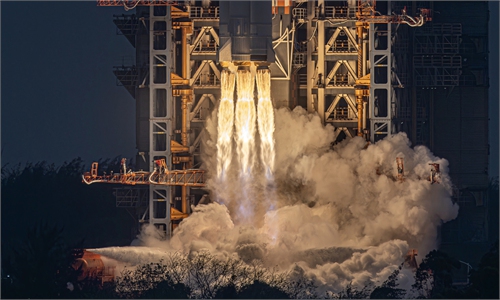Space breeding significant in protecting China's biological diversity, upgrading industrial chain
Romance from space blooms

Zhang Chuanjun, a senior aerospace breeding engineer Photo: Courtesy of Zhang
"In the past, space was high-end, mysterious and distant to the common people. But now through our space breeding efforts, the general public can have a hands-on experience satisfying their fascination with space… It's no longer all about sending man into the vast universe. It's also about bringing back flowers that can bloom and fruits that are tasty," Zhang Chuanjun, a senior aerospace breeding engineer, told the Global Times.
Zhang's space-bred flowers have recently become a hit among Chinese consumers after they were introduced on e-commerce giant Taobao, with the initial offering of "Yandan 1" variety tubers being sold out soon after its online release. It marks the first large-scale market debut of domestically space-bred flowers in China.
On April 10, the first batch of fresh "Yandan 1" started to be delivered to thousands of households nationwide. The next batch will be launched in June, with upcoming varieties including miniature roses and carnations, as learned by the Global Times from the online store's customer service.
The "Yandan 1" is based on the prototype of lilium pumilum. Its parent flower seeds were once sent into space aboard the Shenzhou-11 manned spacecraft in 2016, and were later crossbred with a protoplast to form a new variety.
Lilium pumilum is originally grown in the Yan'an area of Northwest China's Shaanxi Province, it has adapted so that the optimum temperature for growth is between 15 and 30 C. Now, after space breeding, "Yandan 1" has gained characteristics with better heat and cold resistance, waterlogging tolerance, drought resistance, and stress resistance. It can adapt to temperatures ranging from -40 to 40 C, survive continuous rainy days, bloom without water for a winter, and can be planted in acidic or alkaline soils, Zhang explained.
"Flower seeds that have traveled through space are affected by cosmic radiation, high vacuum, microgravity and other space environmental factors. Upon returning to Earth, after undergoing a series of selection and cultivation work in the laboratory, the flowers become more vibrant, have longer flowering periods, and emit a more intense fragrance," Zhang said.
'Super laboratory'
Space-bred plants normally exhibit several characteristics, according to the breeding engineer. First, they can achieve stabilized performance in a relatively shorter time compared to ground-based ones, thus accelerating the breeding process.
Second, space breeding generally shows a greater variety of changes that tend to be beneficial. "When disrupting biological genes, both positive and negative changes can occur. However, space breeding tends to yield positive mutations, which are then selected and retained for further cultivation," Zhang noted.
In addition, space breeding demonstrates a larger magnitude of variation. For instance, while traditional ground-based breeding may increase the weight of a large pumpkin from 50 to 150 kilograms, space breeding could potentially elevate it from 50 to 250 kilograms.
Thanks to these changes, space breeding has become an innovative approach for agricultural seed production and one of the most advanced breeding techniques breaking through the limitations of ground-based methods.
Space provides an excellent mutagenic environment for genetic variation, serving as a "super laboratory" with environmental conditions different from those on Earth, such as a weak magnetic field and microgravity. Additionally, space is a highly clean environment with no air or chemical pollution.
From the perspective of biodiversity, space breeding can significantly enrich China's germplasm resource bank, experts in the field suggested. As space-bred seeds exhibit a variety of traits, good and bad, in their first generation, it becomes necessary to find corresponding seeds for hybridization in the country's germplasm resource bank to counteract the negative traits.
This underscores the importance of having an ample germplasm resource to address any undesirable traits that may arise during the breeding process.
In Southwestern China, for example in Yunnan, Guizhou, and Sichuan provinces, where many biological resources are facing depletion, space breeding offers the opportunity to create a more diverse germplasm resource, reviving those that are gradually diminishing.

Space-bred flowers Photo: Courtesy of Zhang Chuanjun, a senior aerospace breeding engineer
"There is much more that we can do with space breeding besides selling flowers." Zhang revealed to the Global Times that his vision is to use space breeding as a flagship to drive the local industrial chain to achieve rural revitalization across the nation.
"Space breeding can serve as a catalyst for the development of various industries such as science and technology, logistics and e-commerce, ultimately boosting regional industrial upgrades, promoting employment and increasing income. It represents a new quality productive force," Zhang said.
Currently there are four space breeding industrial park projects in East China's Shandong Province.
Taking the "purple agriculture industrial park" as an example, products like space-bred black goji berries, blueberries and purple sweet potatoes, which contain anthocyanins, are planted. Anthocyanins can significantly increase the added value of agricultural products and help farmers increase their income. Additionally, the industrial park drives the formation of an anthocyanin industry in the local area, involving deep processing such as beverages, eye drops and various functional agricultural products. This then leads to the development of industries, logistics, warehousing, and stimulates employment and industrial growth in various aspects.
In August 1987, China's ninth retrievable satellite carried rice, chili pepper seeds, among others to travel into space for the first time, initiating an exciting journey of agricultural seeds in China. Now, China has conducted over 3,000 experiments on space breeding, and developed more than 260 approved varieties of staple crops, over 100 new varieties of vegetables, fruits, forestry and flowers.
Space breeding increased grain production by over 2 billion kilograms annually in China, and generated direct economic benefits exceeding 100 billion yuan ($13.81 billion), according to media reports.

